#princesse de tripoli
Text

de Flers, Robert. Ilsée, Princesse de Tripoli. Illus. Alphonse Mucha, limited ed. Paris: Léon Gruel, 1897.
source: Walters Art Museum, Baltimore, MD, USA (not on view)
#books#alphonse mucha#rare books#princesse de tripoli#walters art museum#ilsee princesse de tripoli#leatherbound#leatherbound books#gilt#gilded
74 notes
·
View notes
Text

Ilsée, Princesse de Tripoli by Robert de Flers
detail
1897
Artist : Alphonse Mucha
306 notes
·
View notes
Text

#alphonse mucha#art nouveau#book cover#floral#ilsée princesse de tripoli#illustration#graphic design#printmaking
49 notes
·
View notes
Text

ILSEE, PRINCESS OF TRIPOLI by Robert de Flers. Illustrated by Alphonse Mucha. Art binding by Léon Gruel. (1897).
source
#beautiful books#book blog#books books books#book cover#books#illustrated book#vintage books#art binding#alphonse mucha#book binding
276 notes
·
View notes
Photo

Vere novo , priori jam mutato consilio , Alienora virgo regia , insignis facie , sed prudentia & honestate prestantior , futura Regina Sicilie , atque cum ea Nymphe obsequiis apte regalibus , accepta benedictione parentum , ab urbe Neapoli gloriosas discessit , per Calabriam , propter maris tedium , usque Regium iter agens : quam discedentem Neapolitane matres , quantum spectantes oculi capere potuerunt , effusis pre gaudio lacrimis affequute sunt.
Gregorio Rosario, Bibliotheca scriptorum qui res in Sicilia gestas sub Aragonum imperio retulere, I, p.456-457
Eleonora was born in Naples in the summer of 1289 as the tenth child (third daughter) of Carlo II lo Zoppo of Anjou, King of Naples, Count of Anjou and Maine, Count of Provence and Forcalquier, Prince of Achaea, and of Maria of Hungary.
Nothing, in particular, is known about her childhood, which she must have spent with her numerous siblings in the many castles of the Kingdom.
She is first mentioned in a Papal bull dated 1300 in which Boniface VIII annulled the marriage of 10 years-old Eleonora to Philippe de Toucy, Prince of Antioch and Count of Tripoli, (the contract had been signed the year before) on account of the bride’s young age and the fact that family hadn’t asked for the Pope’s dispensation.
Two years later, there were discussions of a match with Sancho, the second son (and later successor) of Jaume II of Majorca, but the engagement never occurred.
Finally, in 1302, Eleonora’s fate was sealed. On August 31st 1302 the Houses of Anjou-Naples and of Barcelona signed the Peace of Caltabellotta, which ended the first part of the War of the Sicilian Vespers and settled (or tried to) the problem of which House should have ruled over Sicily. Following this treaty, the old Norman Kingdom’s territory (disputed between the French and Spanish born ruling houses) was to be divided into two parts, with Messina Strait as the ideal boundary line. The peninsular part, the Kingdom of Sicily, now designed as citra farum (on this side of the farum, meaning the strait, later simply known as the Kingdom of Naples ), and the island of Sicily, renamed the Kingdom of Trinacria, designed as ultra farum (beyond the farum).
The Peace of Caltabellotta stipulated that Angevin troops should evacuate the island, while the Aragonese ones should leave the peninsular part. Foundation of the peace would have been the marriage between princess Eleonora of Anjou and King Federico III (or II) of Sicily (“e la pau fo axi feyta , quel rey Carles lexava la illa de Sicilia al rey Fraderich, que li donava a Lieonor, qui era e es encara de les pus savies chrestianes, e la millor qui el mon fos, si no tant solament madona Blanca, sa germana, regina Darago. E lo rey de Sicilia desemparava li tot quant tenia en Calabria e en tot lo regne: e aço se ferma de cascuna de les parts, e que lentredit ques llevava de Sicilia; si que tot lo regne nach gran goig." in Ramon Muntaner, Crónica catalana, ch. CXCVIII). The pact dictated also that once Federico had died, the two kingdoms would be reunited under the Angevin rule. This clause won’t be fulfilled.
The bridal party had to wait until spring 1303 before setting off for her new country since sea storms had damaged part of the fleet and thus delayed the departure. The voyage had cost 610 ounces, where the Florentine bankers Bardi and Peruzzi were asked to advance the payment, and the groom pledged to repay them 140 ounces.
By May 1303, Eleonora and her companions arrived in Messina where she was warmly welcomed and where on Pentecost, May 26th, of the same year she got married to Federico in Messina’s Cathedral (“E a poch de temps lo rey Carles trames madona la infanta molt honrradament a Macina, hon fo lo senyor rey Fraderich, qui la reebe ab gran solemnitat. E aqui a Macina, a la sgleya de madona sancta Maria la Nova, ell la pres per muller e aquell dia fo llevat lentredit per lola la terra de Sicilia per un llegat del Papa, qui era archebisbe, que hi vench de part del Papa, e foren perdonats a tot hom tots los pe cats quen la guerra haguessen feyts: e aquell dia fo posada corona en lesta a madona la regina de Sicilia, e fo la festa la major a Macina que hanch si faes.” in Ramon Muntaner, Crónica catalana, ch. CXCVIII).
After the wedding, most of the bridal party returned to Naples, while the newlyweds proceeded to Palermo.
On July 14th 1305 Eleonora gave birth to the heir, who was called Pietro in honour of the child’s paternal grandfather, Pere III of Aragon. To celebrate his son’s birth, Federico III gifted his bride of Avola castle and the surrounding land, to which will be added the city of Siracusa (in 1314), Lentini, Mineo, Vizzini, Paternò, Castiglione, Francavilla and the farmhouses in Val di Stefano di Briga. This gift would mark the creation of the Camera reginale, which would become the traditional wedding present given to Sicilian Queen consorts, and eventually would be abolished in 1537.
Including Pietro, she would give birth to nine children: Costanza (1304 – post 1344), future Queen consort of Cyprus, Armenia and Princess consort of Antiochia; Ruggero (born circa in 1305 - ?) who would die young; Manfredi (1306-1317) first among his brothers to hold the title of Duke of Athens and Neopatras; Isabella (1310-1349) Duchess consort of Bavaria; Guglielmo (1312-1338) Prince of Taranto and heir to the Duchy of Athens and Neopatras following the death of his brother; Giovanni (1317-1348) Duke of Randazzo, Count of Malta, later also Duke of Athens and Neopatras and Regent of Sicily; Caterina (1320-1342) Abbess of St. Claire Nunnery in Messina; Margherita (1331-1377) Countess Palatine consort of the Rhine.
Through these donations Eleonora became a full-fledged vassal, and had to pay homage to her husband the King. Thanks to official documents, we get the idea that Eleonora tried to manage her lands as much personally as she could do, naming herself vicars, administrators, and granting tariff reductions. Federico indulged his wife as much as he could, although in some cases (like the management of the city of Siracusa) his will was the only one taken into account.
Despite almost every time she was unsuccessful, Eleonora fully embraced her role as mediator between the Aragonese and Angevins. For example, in 1312 her brother-in-law, King Jaume II of Aragon, asked her to dissuade her husband (Jaume’s brother) to ally himself with the Holy Roman Emperor Heinrich VII of Luxembourg since this alliance could generate new friction with the Angevin Kingdom, as well as with the Papacy (with the risk of stalling the Aragonese occupation of Sardinia). After the King of Aragon, it was Pope Clemente’s turn to ask Eleonora to convince Federico to make peace with Roberto of Anjou. In both cases, though, her conciliatory efforts didn’t work.
In 1321 she witnessed her son Pietro being associated to the throne and thus crowned in Palermo (“Anno domini millesimo tricentesimo vicesimo primo, dum Johannes Romanus Pontifex contra Fridericum Regem, & Siculos propter invasionem bonorum Ecclesiarum precipue fulminaret, Fridericus Rex primogenitum suum Petrum, convenientibus Siculis, coronavit in Regem, & patris obitum, inopinatum premetuens, & ut filius qui purus videbatur & simplex, ab adoloscentia regnare cum patre affuesceret patrisque regnando vestigiis inhereret […]” in Gregorio Rosario, Bibliotheca scriptorum ..., I, p. 482). Pietro’s coronation publicly violated the Treaty of Caltabellotta (as the Kingdom should have returned to the House of Anjou), causing the pursuing of warfare between Naples and Palermo. Once again Eleonora’s attempts at peace-making failed miserably, with her nephew, Carlo Duke of Calabria, refusing to even meet her in 1325, after he had successfully raided the outskirts of Messina.
The Queen didn’t have much luck in internal policy too as she failed to appease her husband and her protegé, Giovanni II Chiaramonte. After gravely wounding Count Francesco I Ventimiglia of Geraci (his brother-in-law and one of the King’s trustees), all that Eleonora could do was advise Chiaramonte to flee to avoid the death penalty.
Nevertheless, the Pope still hoped to use the Queen (who, at that time and alone in her Kingdom, was exempted from the Papal interdict) as mediator with her husband, promising to lift the excommunication in exchange for Federico’s backing down. Once again nothing happened.
On June 25th 1337 Federico III died near Paternò. He was buried in Catania since it was too hot for the body to be transported to Palermo (“Feretrum humeris nobiliores efferunt. Adsunt Regii filii, proceresque Regni. Exequias Regina, illustribus comitata matronis, prosequitur.” in Francesco Testa, De vita, et rebus gestis Federici 2. Siciliæ Regis, p.225). After the death of her husband, the now Dowager Queen turned to religion, following the example of those in her family who had consecrated themself to Christ (“At Heleonora certiorem fe de illa consolandi rationem inivit. Ipsa enim , ut Rex excessit e vita, ei, qui omnis consolationis fons est, fese in Virginum collegio Franciscanæ familiæ Catinæ devovit; in hoc Catharinan , & Margaritam filias imitata, quæ in ætatis flore, falsis terrestribus, contemptis bonis, Christ, cui fervire regnare est, in sacrarum Virginum Messanensi Collegio, de Basicò dicto, ejusdem Franciscanæ familiæ fese consecrarant; quod Collegium posteaquam Catharina fancte gubernavit, sanctitatis opinione commendata deceffit” in Francesco Testa, De vita..., p.226).
If Eleonora might have hoped to exert some kind of influence as many other Queen mothers did in the past and would do in the future over their weak-willed royal children, she would soon realize she had a powerful rival in the new Queen consort, her daughter-in-law, Elisabetta of Carinthia. Like Eleonora, the new Queen supported the Latin faction (a group of Sicilian noblemen who opposed the Aragonese rulership over Sicily, hoping the island would be returned under the influence of the Angevins instead). But, while Elisabetta had managed to raise the Palizzis to the highest positions at court, her mother-in-law still supported the Chiaramonte, making it possible for the exiled Giovanni II to return to Sicily, be pardoned by the King and see all his goods be returned. Soon though Chiaramonte resumed his personal feud against the Ventimiglia (also part of the Latin faction) and once again Eleonora's attempt to bring peace failed miserably. Only through Grand Justiciar Blasco II d'Alagona's intervetion, the crisis was averted.
In 1340, the Dowager Queen made a last attempt to appease the new Pope, Benedict XII. Unfortunately, the Sicilian envoys sent to Avignon to take an oath of vassalage (since Norman times Sicily theoretically belonged to the Papacy, who granted it to the Sovereigns who acted as Papal Legates) were treated roughly by the Pope, who declared Roberto of Anjou (Eleonora's brother) as Sicily's legitimate King.
Deeply distraught, the Dowager Queen resolved to definitely retire from public life. She spent what it remained on her life visiting the monastery of San Nicolo' d'Arena (Catania), joining the monks in their religious life. She died in one of the monastery's cells on August 10th 1341. Her body would be buried in the Church of San Francesco d'Assisi all'Immacolata (Catania), the construction of which she had personally promoted in 1329 to thank the Virgin Mary for protecting the city from one of many Mount Etna's eruptions.
Sources
AMARI MICHELE, La guerra del Vespro siciliano
CORRAO PIETRO, PIETRO II, re di Sicilia in Dizionario Biografico degli Italiani, Vol. 83
DE COURCELLES JEAN BAPTISTE PIERRE JULLIEN, Histoire généalogique et héraldique des pairs de France: des grands dignitaires de la couronne, des principales familles nobles du royaume et des maisons princières de l'Europe, Vol. XI,
FODALE SALVATORE, Federico III d’Aragona, re di Sicilia, in Dizionario Biografico degli Italiani, Vol. 45
GREGORIO ROSARIO, Bibliotheca scriptorum qui res in Sicilia gestas sub Aragonum imperio retulere, I,
KIESEWETTER ANDREAS, ELEONORA d'Angiò, regina di Sicilia, in Dizionario Biografico degli Italiani, Vol. 42
de MAS LATRIE LOUIS, Histoire de l'île de Chypre sous le règne des princes de la maison de Lusignan. 3
MUNTANER RAMON, Crónica catalana
Sicily/naples: counts & kings
TESTA FRANCESCO, De vita, et rebus gestis Federici 2. Siciliæ Regis
#historicwomendaily#historical women#history#history of women#herstory#eleanor of naples#frederick iii of sicily#house of aragon and sicily#people of sicily#women of sicily#aragonese-spanish sicily#myedit#historyedit
26 notes
·
View notes
Text
판도라 조작된 낙원 11회 다시 보기 11화 E11 tvN
판도라 조작된 낙원 11회 다시 보기 11화 E11 tvN 링크<<

판도라 조작된 낙원 11회 다시 보기 11화 E11 tvN
판도라 조작된 낙원 11회 다시 보기 11화 E11 tvN
판도라 조작된 낙원 11회 다시 보기 11화 E11 tvN
판도라 조작된 낙원 11회 다시 보기 11화 E11 tvN
판도라 조작된 낙원 11회 다시 보기 11화 E11 tvN
Barisan, the first head of Ibelin, married Helvis, the heiress of Ramla, obtained Ramla by wedlock, Hugues, Baudouin, Balian, and Ermangar. Stéphanie from Ermengarde has 판도라 조작된 낙원 11회 다시 보기 11화 E11 tvNthree sons and two daughters. As time passes, the eldest son inherits Ibelin and the second son inherits Ramla, but the eldest son, Wig, becomes a soldier on the pilgrimage to Santiago. His second son, Baudouin, inherits Ibelin, but gives Ibelin to his youngest son, Balian, who has no estates with Ramla, which he rules. The third son, B판도라 조작된 낙원 11회 다시 보기 11화 E11 tvNalian, later married Maria Komnini, a princess of the Byzantine Empire and the widow of Amory I, and obtained Nablus, which had been under the direct control of the queen since Melisande. Moving on to the island of Cyprus, he ceded Ramla to get Ibelin, Ramla, Nablus, and Beersheba.
Balian's descendants were the most influential nobles in the kingdoms of Jerusalem and Cyprus. Balian's eldest son, John, ruled the county of Beirut in the kingdom of Jerusalem and was in the position of regent in the kingdom of Cyprus판도라 조작된 낙원 11회 다시 보기 11화 E11 tvN at the same time. When he tried to put Cyprus under him, he rebelled against the emperor's authority as an opposition leader. In 1241, the Ibelin family regained Jerusalem according to the emperor's end-of-war treaty, and in the aftermath, they returned the Ibelin territories that had been occupied by Saladin.
Together with Melisande of Arsuf, Balian III, ruler of Beirut, Baldwin, archdeacon of the kingdom of Cyprus, John, lord of Arsuf and consul of the kingdom of Jerusalem, and Guy, consul of Cyprus had many children, such as
Balian III married Eschiva of Montbéliard and gave birth to John II of Beirut, who married the daughter of Guy I de la Roche, Duke of Athens.
John of Arsuf was the father of Balian of Arsuf, who married Plaisance of Antioch.판도라 조작된 낙원 11회 다시 보기 11화 E11 tvN
Guy was the father of Isabella, King Hugh I of the Kingdom of Jerusalem and wife of Hugh III of the Kingdom of Cyprus.
In this way, the Ibelin family came into contact with almost all crusader countries, including the satellite countries of the Latin Empire, and in particular, the Kingdom o판도라 조작된 낙원 11회 다시 보기 11화 E11 tvNf Cyprus was a queen family for generations. The Toulouse family is the family of Raymond, one of the main leaders of the 1st Crusade. Raymond was the younger brother of Guillaume IV, Count of Toulouse, but when Guillaume IV designated his daughter Philippa as his successor and died, he immediately usurped and became Count of Toulouse. For this reason, Guillaume IX, Duke of Aquitaine, married to Philippa, 판도라 조작된 낙원 11회 다시 보기 11화 E11 tvNattacked Toulouse several times claiming the title of count, but defended it well.
He was a devout Catholic and wanted to die in the Holy Land, so he was doing the Reconquista movement when he was invited to participate in the First Crusade by the papa판도라 조작된 낙원 11회 다시 보기 11화 E11 tvNl envoy, and he was the first of the princes to pledge to participate. As he was the oldest in age, he became the leader of the princes of southern France. In Constantinople, he made a new oath to the Eastern Roman Emperor Alexius I. After conquering Antioch, he had soldiers stationed in the city, but since he was driven out by Bohemond I, he declared that he wanted possession of Tripoli, south of Antioch, as his territory to hinder Bohemond's territorial expansion, but before o판도라 조작된 낙원 11회 다시 보기 11화 E11 tvNccupation. did However, as his soldiers hoped to advance on Jerusalem, they stopped once and attacked Jerusalem together with Godefroy of Bouillon.
At first he was made king of Jerusalem, but he refused because he did not want to be called king in the land where Christ died. Because of this, Godfrey was elected kin판도라 조작된 낙원 11회 다시 보기 11화 E11 tvNg, but Godfrey also did not want to be called king, so he used the title of guardian of the holy tomb. After that, he participated in the battle of Ascalon, but he could not capture this place because he had a quarrel with Godefrua over the occupation of Ascalon. Because of this, he broke with the Crusades and stayed in Constantinople. Here he joined the Crusaders in 1101, but was defeated in Anatolia. He returned to C판도라 조작된 낙원 11회 다시 보기 11화 E11 tvNonstantinople and set the goal of conquering Tripoli with the aid of Emperor Alexius Comnenus, but was killed during the expedition.
His nephew Guillaume Jourdain continued the siege, but Bertrand then replaced him and captured Tripoli in 1109, establishing the county of Tripoli. His subordinate, Raymondus de Aguilers, wrote the account of the First Crusade from Raymon판도라 조작된 낙원 11회 다시 보기 11화 E11 tvNd's point of view. Although he never saw the establishment of the county of Tripoli, he was recognized as the 1st Count of Tripoli because he nominally declared Tripoli his domain. Since then, he is active in the front line defending the north of the Kingdom of Jerusalem.
1 note
·
View note
Text
판도라 조작된 낙원 12화 다시 보기 12회 e12 (드라
판도라 조작된 낙원 12화 다시 보기 12회 e12 링크<<

판도라 조작된 낙원 12화 다시 보기 12회 e12 (드라마
판도라 조작된 낙원 12화 다시 보기 12회 e12 (드라마
판도라 조작된 낙원 12화 다시 보기 12회 e12 (드라마
판도라 조작된 낙원 12화 다시 보기 12회 e12 (드라마
판도라 조작된 낙원 12화 다시 보기 12회 e12 (드라마
Fulk V, Count of Anjou, married Melisande, the heir to the throne of the Kingdom of Jerusalem in 1129, entrusted the territory to his eldest son Geoffroy,[2] and moved to Jerusalem, where he became co-king in 1131. He sought to strengthen the authority of his wife, Melisande, and clashed with the faction of lords descended from the crusader commanders. They had two sons, Baudouin and Amory. Fulk fell from a horse while hunting in 1143, fell into a critical condition and died shortly thereafter.
Baldwin, who was 13 at the time of succession, ascends the throne as Baldwin III. Because of her age, her mother Mélisande acted as regent, but when she did not give up full power even after reaching adulthood, she divided her kingdom into north and south, waged a civil war, and forced her mother to retire. Afterwards, he occupied Ascalon, gained a bridgehead to Egypt, married Theodora, the niece of Manuel I of the Eastern Roman Empire, and tried to ally with him.
Amor was married to Agnes of Courtenay and had three children, Sibylla, Baldwin and Alix (who died in infancy). was against it Instead of divorcing Agnes, Amory made Sibylla and Baldwin recognized as deficits, and separated from Agnes on the pretext that her great-great-grandfathers were the same. After that, Amor tried to expand his power like his brother by marrying Maria Komnini, a member of the Eastern Roman Empire and the imperial family, while attempting to invade Egypt's Fatimid dynasty. Returned to inaction by Dean, he died of dysentery in 1174.
His eldest son, Baldwin, ascended the throne as Baldwin IV, but at the time he was a patient with leprosy, an incurable disease. Therefore, he tried to stabilize the kingdom by marrying his sister Sibylla to a powerful nobleman. The first marriage partner was Guglielmo of the Alleramicci family, the eldest son of the Marquis of Montferrato, but when he died of malaria, leaving only her heir, Baldwin, she became Guy de Rue. He married Jinyang again and made her regent. Baldwin IV, suffering from illness and repeating battles and truces with Saladin, who became the ruler of Egypt, designated Baldwin, his maternal nephew, who was the surviving son of Sibylla and Guglielmo, as his successor and died young at the age of 24.
After the death of Baldwin, his sister Sibylla and her half-sister Isabella, who was born to Amor and Maria Komnini, sometimes became queen, but the wives ruled. He was only 8 years old, and at the same time a sickly child, he died after a year, and his mother, Sibylla, received the crown.
Meanwhile, Amor I's new wife, Maria Komnini, remarried her amorite, to Balian of Belin, who was a nobleman opposed to Sibylla and Guy de Lusignan. Balian worked with Raymond of Tripoli, who was the regent of King Baldwin V, to try to establish his stepdaughter, Princess Isabel, and her husband, Honfroi of Toron, as kings. loyal and fail After the loss of Jerusalem in the aftermath of the Battle of Hattin and the death of Sibylla in 1190, Balian divorced Isabel and remarried Corrado of Montferrato.
Corrado, the younger brother of Sibylla's first husband, Guglielmo, had a track record of defending Tire from Saladin's attack, and was favored by the lords rather than incompetent. Philip II of France, who came from the Third Crusade, also supported Corrado, and Richard I of England supported him on the contrary, but in the end, at the council of nobles in 1192, he had to recognize Corrado as the next king of Jerusalem. Corrado, who became co-king with her wife Isabel and Conrad I, was assassinated by Assassin in less than a month.
Isabel married two more times as if she was being sold after that, but she could not see her son who would be her successor. Maria married Jean de Brienne in 1212. She gave birth to Isabella II at the age of 21 and died of childbirth fever shortly after.
1 note
·
View note
Text
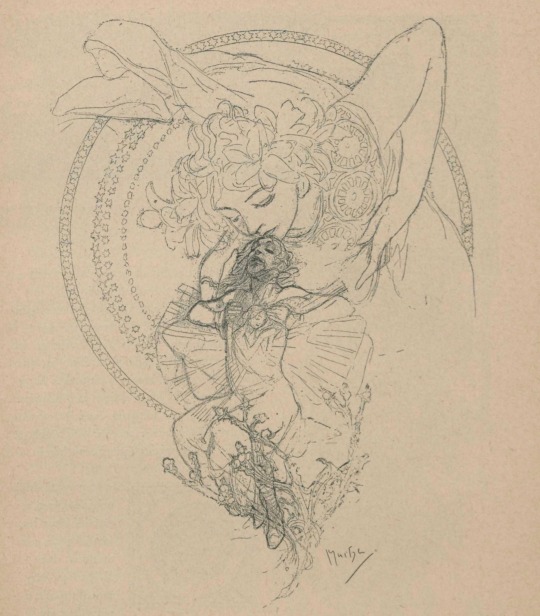
Study for Ilsée
Artist: Alphonse Mucha
154 notes
·
View notes
Photo



Illustrations by Alphonse Mucha, for Ilsée, Princesse De Tripoli by Robert de Flers, based on Edmond Rostand’s play La Princesse Lointaine
1897
courtesy of Kyle Geib on Flickr x x x
#book illustration#illustration#Art Nouveau#Mucha#Alphonse Mucha#Czech#art#Robert de Flers#Ilsée Princesse De Tripoli#Edmond Rostand#La Princesse Lointaine#French#literature#play#novel#turn of the century
551 notes
·
View notes
Photo
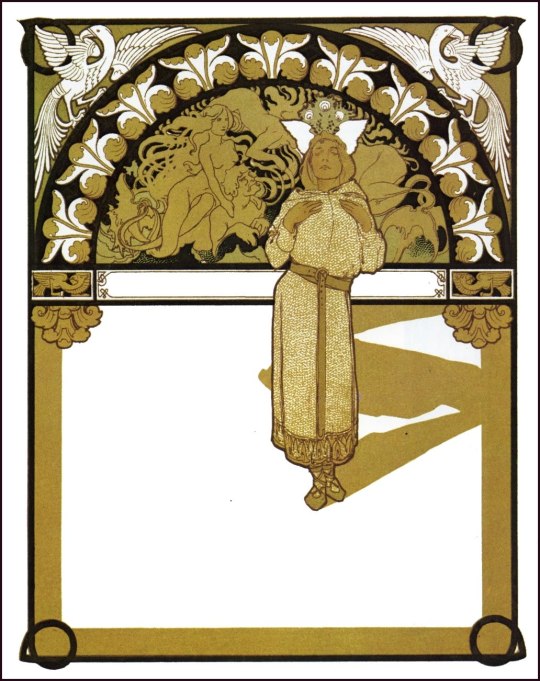
Illustration from Ilsée, Princesse de Tripoli by Alphonse Mucha (1897)
#alphonse mucha#art#illustration#art nouveau#19th century#19th century art#vintage art#vintage illustration#vintage#czech art#czech artist#books#book illustration#childrens books#princess#fine art#golden age of illustration#classic art
422 notes
·
View notes
Photo

Ilsée, Princesse de Tripoli - Robert de Flers, lithographies de Alphonse Mucha - 1897 - via Gallica
58K notes
·
View notes
Text


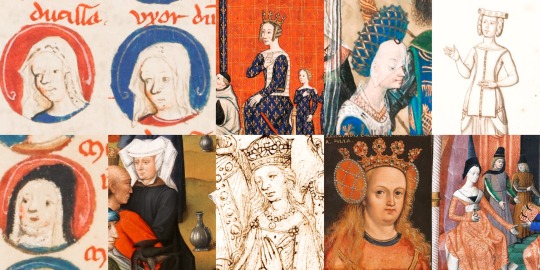
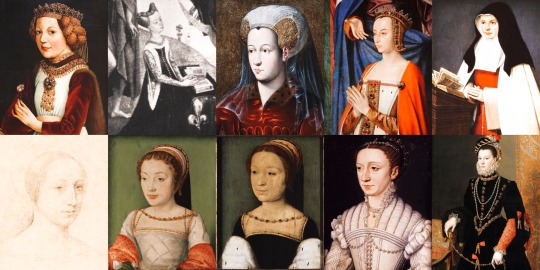
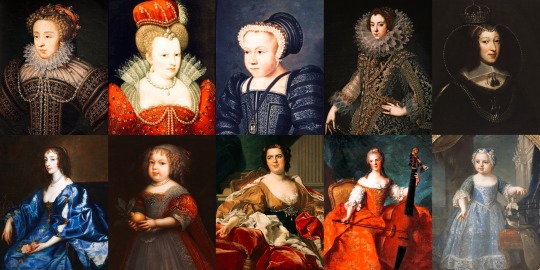

Every French princess ever
Other posts in this series: Every Queen of England ever, Every English princess ever, Every Queen of France ever
Rothilde - daughter of Charles the Bald and Richilde of Provence
Ermentrude - daughter of Louis the Stammerer and Ansgarde of Burgundy
Emma of France - daughter of Robert I and Beatrice of Vermandois (Queen consort of West Francia)
Emma of France - daughter of Robert I and Beatrice of Vermandois (Queen consort of West Francia)
Matilda of France - daughter of Louis IV and Gerberga of Saxony (Queen consort of Burgundy)
Hedwig of France - daughter of Hugh Capet and Adelaide of Aquitaine (Countess of Mons)
Gisèle of France - daughter of Hugh Capet and Adelaide of Aquitaine (Countess of Ponthieu)
Advisa of France - daughter of Robert II and Constance of Arles (Countess of Nevers)
Adela of France - daughter of Robert II and Constance of Arles (Duchess of Normandy, Countess of Flanders)
Constance of France - daughter of Philip I and Bertha of Holland (Princess of Antioch, Countess of Troyes)
Cecile of France - daughter of Philip I and Bertrade de Montfort (Princess of Galilee, Countess of Tripoli)
Constance of France - daughter of Louis VI and Adélaide of Maurienne (Countess of Boulogne and Toulouse)
Marie of France - daughter of Louis VII and Eleanor of Aquitaine (Countess of Champagne)
Alice of France - daughter of Louis VII and Eleanor of Aquitaine (Countess of Blois)
Margaret of France - daughter of Louis VII and Constance of Castile (Queen consort of England, Queen consort of Hungary and Croatia)
Alys of France - daughter of Louis VII and Constance of Castile (Countess of Vexin, Countess of Ponthieu)
Agnes of France - daughter of Louis VII and Adela of Champagne (Byzantine Empress consort)
Marie of France - daughter of Philip II and Agnes of Merania (Duchess of Brabant)
Isabelle of France - daughter of Louis VIII and Blanche of Castile (Saint)
Isabella of France - daughter of Louis IX and Margaret of Provence (Queen consort of Navarre)
Blanche of France - daughter of Louis IX and Margaret of Provence (Infanta of Castile)
Margaret of France - daughter of Louis IX and Margaret of Provence (Duchess of Brabant)
Agnes of France - daughter of Louis IX and Margaret of Provence (Duchess of Burgundy)
Blanche of France - daughter of Philip III and Maria of Brabant (Duchess of Austria)
Margaret of France - daughter of Philip III and Maria of Brabant (Queen consort of England)
Isabella of France - daughter of Philip IV and Joan I of Navarre (Queen consort of England)
Joan II of Navarre - daughter of Louis X and Margaret of Burgundy (Queen regnant of Navarre)
Joan III of Burgundy - daughter of Philip V and Joan II of Burgundy (Countess of Burgundy and Artois)
Margaret I of Burgundy - daughter of Philip V and Joan II of Burgundy (Countess of Burgundy and Artois)
Isabella of France - daughter of Philip V and Joan II of Burgundy (Dauphine of Viennois)
Blanche of France - daughter of Philip V and Joan II of Burgundy
Blanche of France - daughter of Charles IV and Joan of Évreux (Duchess of Orléans)
Joan of France - daughter of Philip VI and Blanche of Navarre
Joan of Valois - daughter of John II and Bonne of Luxembourg (Queen consort of Navarre)
Marie of France - daughter of John II and Bonne of Luxembourg (Duchess of Bar)
Isabella of France - daughter of John II and Bonne of Luxembourg (Countess of Vertus)
Catherine of France - daughter of Charles V and Joanna of Bourbon (Countess of Montpensier)
Isabella of Valois - daughter of Charles VI and Isabeau of Bavaria (Queen consort of England, Duchess of Orléans)
Joan of Valois - daughter of Charles VI and Isabeau of Bavaria (Duchess of Brittany)
Marie of Valois - daughter of Charles VI and Isabeau of Bavaria
Michelle of Valois - daughter of Charles VI and Isabeau of Bavaria (Duchess of Burgundy)
Catherine of Valois - daughter of Charles VI and Isabeau of Bavaria (Queen consort of England)
Radegonde of Valois - daughter of Charles VII and Marie of Anjou
Yolande of Valois - daughter of Charles VII and Marie of Anjou (Duchess of Savoy)
Magdalena of Valois - daughter of Charles VII and Marie of Anjou (Princess of Viana)
Joan of France - daughter of Charles VII and Marie of Anjou (Duchess of Bourbon)
Catherine of France - daughter of Charles VII and Marie of Anjou (Countess of Charolais)
Anne of France - daughter of Louis XI and Charlotte of Savoy (Duchess of Bourbon)
Joan of France - daughter of Louis XI and Charlotte of Savoy (Queen consort of France)
Claude of France - daughter of Louis XII and Anne of Brittany (Queen consort of France, Duchess of Brittany)
Renée of France - daughter of Louis XII and Anne of Brittany (Duchess of Ferrara, Modena and Reggio)
Madeleine of Valois - daughter of Francis I and Claude of France (Queen consort of Scotland)
Margaret of Valois - daughter of Francis I and Claude of France (Duchess of Berry, Duchess of Savoy)
Elisabeth of Valois - daughter of Henry II and Catherine de' Medici (Queen consort of Spain)
Claude of Valois - daughter of Henry II and Catherine de' Medici (Duchess of Lorraine)
Margaret of Valois - daughter of Henry II and Catherine de' Medici (Queen consort of France, Queen consort of Navarre)
Marie Elisabeth of France - daughter of Charles IX and Elisabeth of Austria
Elisabeth of France - daughter of Henry IV and Marie de' Medici (Queen consort of Spain, Queen consort of Portugal)
Christine of France - daughter of Henry IV and Marie de' Medici (Duchess of Savoy)
Henrietta Maria - daughter of Henry IV and Marie de' Medici (Queen consort of England)
Marie Thérèse - daughter of Louis XIV and Maria Theresa of Spain (Madame Royale)
Louise Élisabeth of France - daughter of Louis XV and Marie Leszczyńska (Duchess of Parma, Piacenza and Guastalla)
Henriette of France - daughter of Louis XV and Marie Leszczyńska
Marie Louise of France - daughter of Louis XV and Marie Leszczyńska
Marie Adélaïde de France - daughter of Louis XV and Marie Leszczyńska (Duchess of Louvois)
Victoire of France - daughter of Louis XV and Marie Leszczyńska
Sophie of France - daughter of Louis XV and Marie Leszczyńska (Duchess of Louvois)
Thérèse of France - daughter of Louis XV and Marie Leszczyńska
Louise of France - daughter of Louis XV and Marie Leszczyńska (Saint)
Marie-Thérèse - daughter of Louis XVI and Marie Antoinette (Queen consort of France)
Sophie of France - daughter of Louis XVI and Marie Antoinette
Sophie d'Artois - daughter of Charles X and Maria Theresa of Savoy
Louise of Orléans - daughter of Louis Philippe I and Maria Amalia of Naples and Sicily (Queen consort of the Belgians)
Marie of Orléans - daughter of Louis Philippe I and Maria Amalia of Naples and Sicily (Duchess of Württemberg)
Clémentine of Orléans - daughter of Louis Philippe I and Maria Amalia of Naples and Sicily (Princess of Saxe-Coburg and Gotha, Duchess of Saxony)
#french history#catherine of valois#claude of france#henrietta maria#elisabeth of valois#historical women
33 notes
·
View notes
Photo








Women of the Crusader States || The Reigns of Baudouin II and Mélisende + Foulques
Morphia of Melitene
(unknown – c. 1126/7) Daughter of Khoril of Melitene. Wife of Baudouin II de Jérusalem. Mother of Mélisende, Alix, Hodierne, and Yvette de Jérusalem.
Mélisende de Jérusalem
(1105 – 11 September 1161) Daughter of Baudouin II de Jérusalem and Morphia of Melitene. Wife of Foulques V, comte d’Anjou. Mother of Baudouin III and Amaury de Jérusalem. Grandmother of Baudouin IV, Sibylle, and Isabelle Ire de Jérusalem.
Alix de Jérusalem
(c. 1110 – after 1136) Daughter of Baudouin II de Jérusalem and Morphia of Melitene. Wife of Bohémond II, prince d’Antioche. Mother of Constance, princesse d’Antioche. Grandmother of Bohémond III, prince d’Antioche; Marie d’Antioche, Byzantine Empress; Philippa d’Antioche, dame de Toron; Baudouin d’Antioche; and Agnès d’Antioche, magyar királyné.
Hodierne de Jérusalem
(c. 1110 – c. 1164) Daughter of Baudouin II de Jérusalem and Morphia of Melitene. Wife of Raymond II, comte de Tripoli. Mother of Raymond III, comte de Tripoli and Mélisende de Tripoli.
Yvette de Jérusalem
(c. 1118 – 1178) Daughter of Baudouin II de Jérusalem and Morphia of Melitene. Abbess of Bethany.
Beatrice Rubinyan
(1075 – c. 1130) Daughter of Kostandin I, Lord of Armenian Cilicia and an unnamed great-granddaughter of Bardas Phokas. Wife of Josselin Ier de Courtenay, comte d’Édesse. Mother of Josselin II de Courtenay, comte d’Édesse. Grandmother of Agnès de Courtenay, Josselin III de Courtenay, and Isabelle de Courtenay.
Cécile de France
(1097 – 1145) Daughter of Philippe Ier de France and Bertrade de Montfort. Wife of Tancrède de Hauteville, prince de Galilée and Pons de Saint-Gilles, comte de Tripoli. Mother of Raymond II, comte de Tripoli. Grandmother of Raymond III, comte de Tripoli and Mélisende de Tripoli.
Helvis de Rama
(c. 1110 – aft. 1152) Daughter of Baudouin Ier, seigneur de Rama and Stéphanie, dame de Naplouse. Wife of Barisan d’Ibelin, seigneur de Rama. Mother of Hugues d’Ibelin, seigneur de Rama; Baudouin d’Ibelin; seigneur de Rama; Balian d’Ibelin, seigneur de Naplouse; and Ermengarde d’Ibelin.
#historyedit#crusader states#crusades#french history#asian history#european history#medieval#history#women of the crusader states#nanshe's graphics
77 notes
·
View notes
Text

ILSEE. PRINCESSE DE TRIPOLI by Robert de Flers. (Paris: Piazza, 1897) Lithographs by Alphonse Mucha.
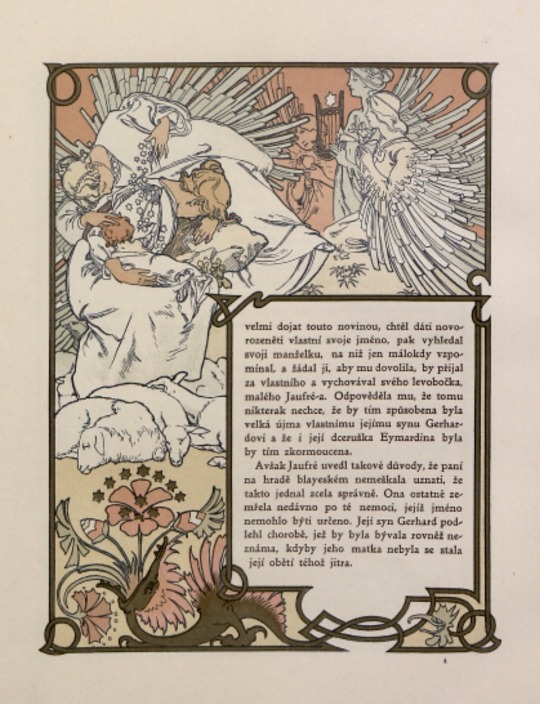


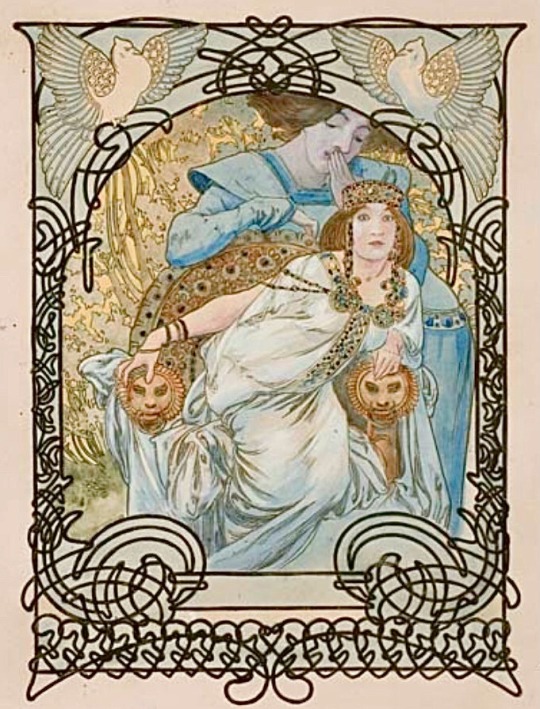
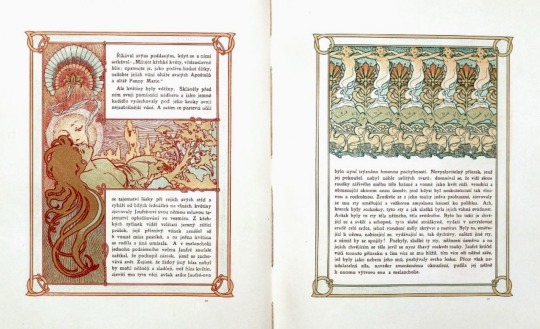

#beautiful books#book blog#books books books#book cover#books#illustrated book#vintage books#victorian era#alphonse mucha#lithographs
64 notes
·
View notes
Text

Portrait of Guy de Lusignan, King of Jerusalem.
19th century painting by French artist François-Édouard Picot (1786–1868).
🏛️ Salles des Croisades, Palace of Versailles.
—
Having arrived in the Holy Land in the late 1170’s under the capacity of a pilgrim or crusader, Guy of Lusignan rose to prominence in 1180 after being hastily married to Princess Sibylla, sister of the leprous King Baldwin IV of Jerusalem, in order to prevent a political incident within the kingdom concerning Raymond III, Count of Tripoli.
With the king’s health deteriorating, in 1182 Guy was named regent, but fell out of favour with Baldwin after provoking Sultan Saladin alongside Raynald of Châtillon during peacetime and his hesitance during the Siege of Kerak a year later.
In 1185, after the death of Baldwin, age 23, the king was initially succeeded by his nephew Baldwin V, son of Sibylla and her first husband William of Montferrat, but the sickly boy king passed away within a year of his coronation and was succeeded by his mother Sibylla as queen with Guy as her chosen king.
Heading into 1187, the newly crowned king was preoccupied with the daunting task of repelling Saladin’s invasion of the kingdom, but ultimately led the vast majority of the crusader army to ruin at the Battle of Hattin, after which Guy was taken captive to Damascus leaving Sibylla and Balian of Ibelin alone to defend Jerusalem.
Thus, on October 2, 1187 Jerusalem fell to the sultan after almost a century of Frankish occupation.
Upon his release a year later, Guy and Sibylla took refuge in Tyre, the last Christian bastion in the Holy Land thanks to Conrad of Montferrat, but ended up feuding with him over the throne of the Christian rump state, during which time Guy laid siege to Acre on the eve of the Third Crusade.
Ultimately, in 1192, Conrad was unanimously elected as the new King of Jerusalem. Guy conceded defeat but was compensated by purchasing the island of Cyprus from the Knights Templar where he ruled as its first king for a further two years prior to his death on July 18, 1194.
—
👑 Discover Guy of Lusignan alongside his fellow fabled crusader kings in Holy Wars ♰ The Pastime of Kings, a historical card game that chronicles the two-hundred year legacy of the Kingdom of Jerusalem coming soon to #Kickstarter.
📧 Would you like to get notified when Holy Wars goes live on Kickstarter? Send us your email address privately via Messenger in order to get added to the mailing list and prepare to join our #Crusade!
6 notes
·
View notes
Text

Ilsée, Princesse de Tripoli - Robert de Flers, lithographies de Alphonse Mucha - 1897 - via Gallica
3 notes
·
View notes